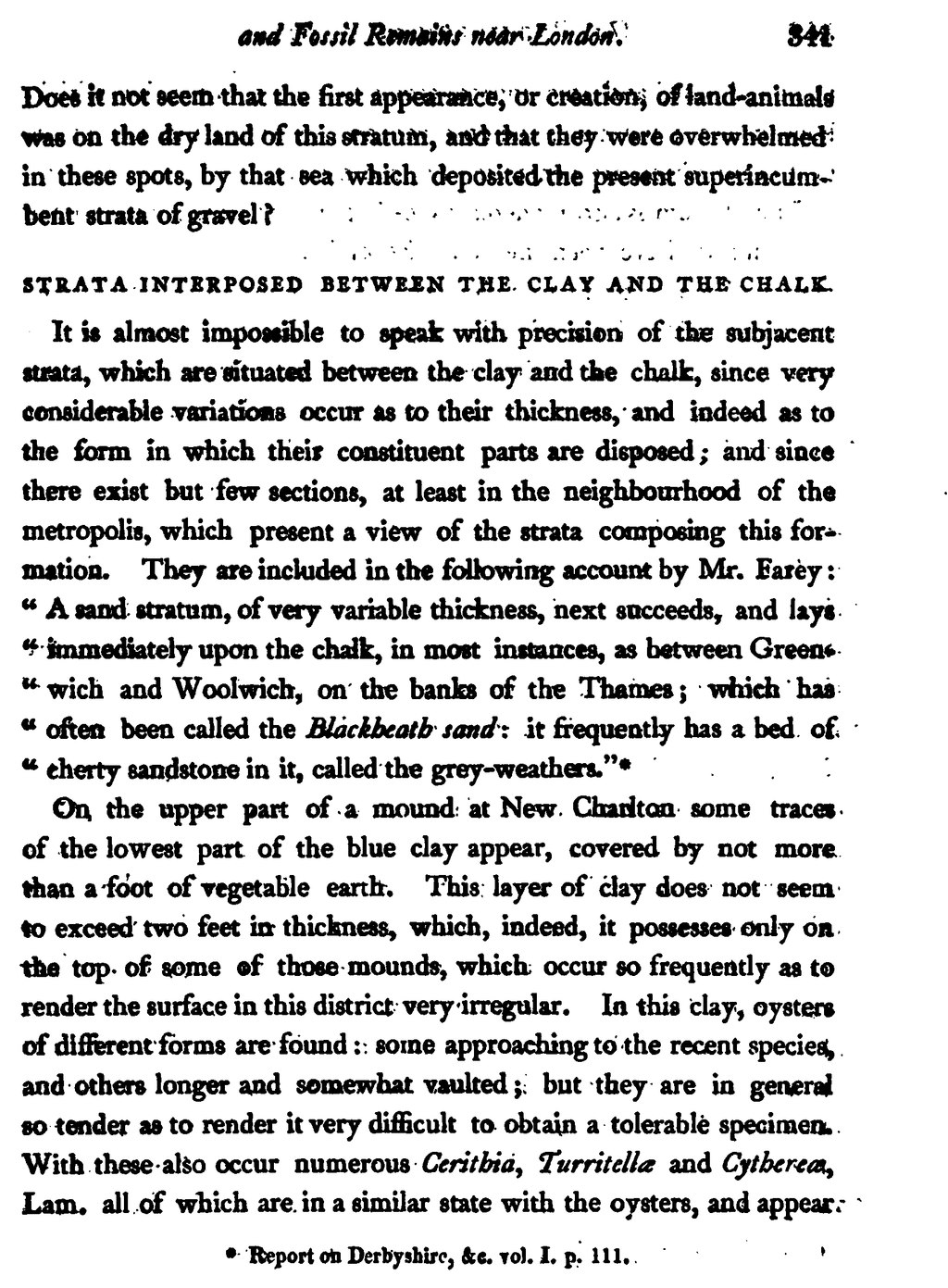Does it not seem that the first appearance, or creation, of land-animals was on the dry land of this stratum, and that they were overwhelmed in these spots, by that sea which deposited the present superincumbent strata of gravel?
strata interposed between the clay and the chalk.
It is almost impossible to speak with precision of the subjacent strata, which are situated between the clay and the chalk, since very considerable variations occur as to their thickness, and indeed as to the form in which their constituent parts are disposed; and since there exist but few sections, at least in the neighbourhood of the metropolis, which present a view of the strata composing this formation. They are included in the following account by Mr. Farey: “ A sand stratum, of very variable thickness, next succeeds, and lays immediately upon the chalk, in most instances, as between Greenwich and Woolwich, on the banks of the Thames; which has often been called the Blackheath sand: it frequently has a bed of cherty sandstone in it, called the grey-weathers.”[1]
On the upper part of a mound at New Charlton some traces of the lowest part of the blue clay appear, covered by not more than a foot of vegetable earth. This layer of clay does not seem to exceed two feet in thickness, which, indeed, it possesses only on the top of some of those mounds, which occur so frequently as to render the surface in this district very irregular. In this clay, oysters of different forms are found: some approaching to the recent species, and others longer and somewhat vaulted; but they are in general so tender as to render it very difficult to obtain a tolerable specimen. With these also occur numerous Cerithia, Turritelle and Cytbereæ, Lam. all of which are in a similar state with the oysters, and appear.
- ↑ Report on Derbyshire, &c. vol. I. p. 111.

